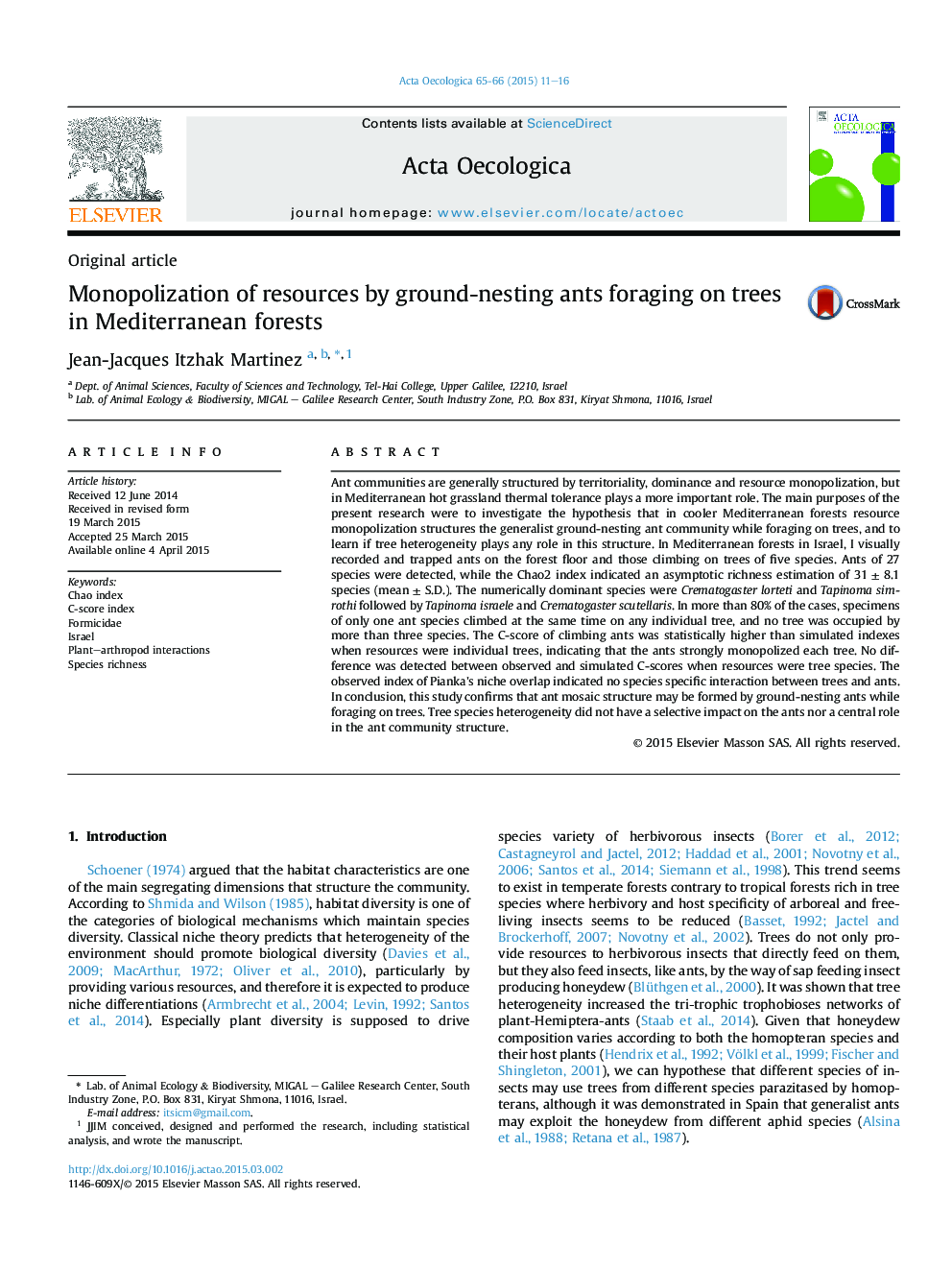| کد مقاله | کد نشریه | سال انتشار | مقاله انگلیسی | نسخه تمام متن |
|---|---|---|---|---|
| 4380678 | 1617706 | 2015 | 6 صفحه PDF | دانلود رایگان |
• In Mediterranean forests ground nesting ants forage on trees.
• Ant communities may be structured by tree monopolization.
• Tree diversity should play a strong role in this structure.
• 80% of occupied trees were held by only 1 ant species.
• Tree species diversity was not involved in the community structure.
Ant communities are generally structured by territoriality, dominance and resource monopolization, but in Mediterranean hot grassland thermal tolerance plays a more important role. The main purposes of the present research were to investigate the hypothesis that in cooler Mediterranean forests resource monopolization structures the generalist ground-nesting ant community while foraging on trees, and to learn if tree heterogeneity plays any role in this structure. In Mediterranean forests in Israel, I visually recorded and trapped ants on the forest floor and those climbing on trees of five species. Ants of 27 species were detected, while the Chao2 index indicated an asymptotic richness estimation of 31 ± 8.1 species (mean ± S.D.). The numerically dominant species were Crematogaster lorteti and Tapinoma simrothi followed by Tapinoma israele and Crematogaster scutellaris. In more than 80% of the cases, specimens of only one ant species climbed at the same time on any individual tree, and no tree was occupied by more than three species. The C-score of climbing ants was statistically higher than simulated indexes when resources were individual trees, indicating that the ants strongly monopolized each tree. No difference was detected between observed and simulated C-scores when resources were tree species. The observed index of Pianka's niche overlap indicated no species specific interaction between trees and ants. In conclusion, this study confirms that ant mosaic structure may be formed by ground-nesting ants while foraging on trees. Tree species heterogeneity did not have a selective impact on the ants nor a central role in the ant community structure.
Journal: Acta Oecologica - Volumes 65–66, May–June 2015, Pages 11–16
